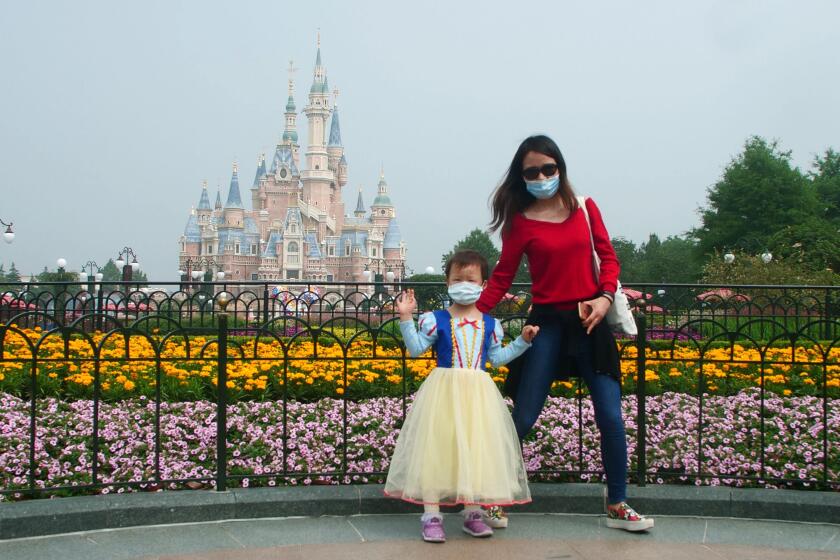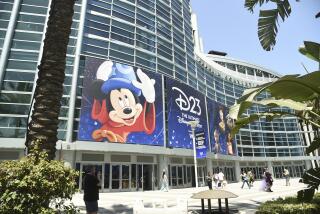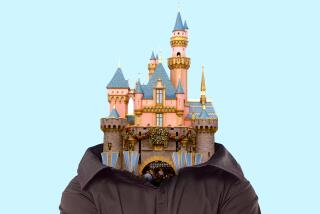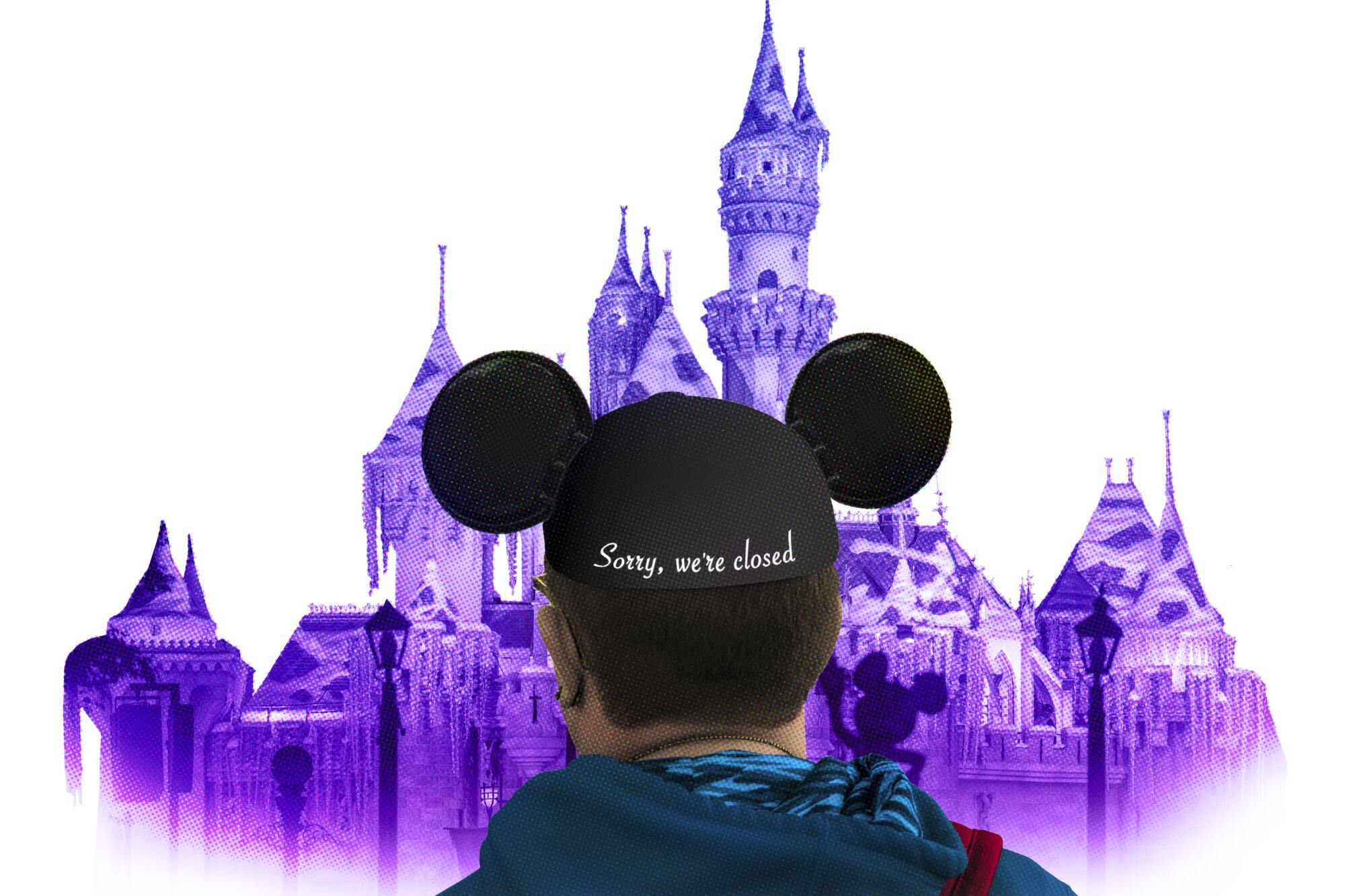
When Anaheim’s Disneyland Resort shuttered in March, it was such a rare occurrence that it put an exclamation point on our troubled times. It also immediately gave us something to look forward to: Disneyland’s reopening.
How poetic if things had gone as planned just a month ago and Disneyland’s turnstiles had been unlocked Friday, on its 65th anniversary.
Such a moment would be the all-clear: Even if America and the world hadn’t yet rid itself of a highly contagious, deadly virus, we as a people and a country had endured. Things are OK. It is safe to again gather in groups and play at sillier, more fantastical versions of ourselves, something about 19 million of us do every year.
Disneyland, however, will be closed on its 65th anniversary.
The last time I was at Disneyland was March 6. That was three days after my previous visit on March 3. Which was four days after my next previous visit on Feb. 28. For me and many Southern California residents, Disneyland is more than a theme park; it is where I go to write, to read, to reset. It represents something between a living pop-art museum and an emotional retreat. Mostly it’s an invitation to play, and when I play I’m calm.
Yet I would not be calm if I were inside Disneyland right now. I am relieved that the state of California isn’t allowing Disneyland to open.
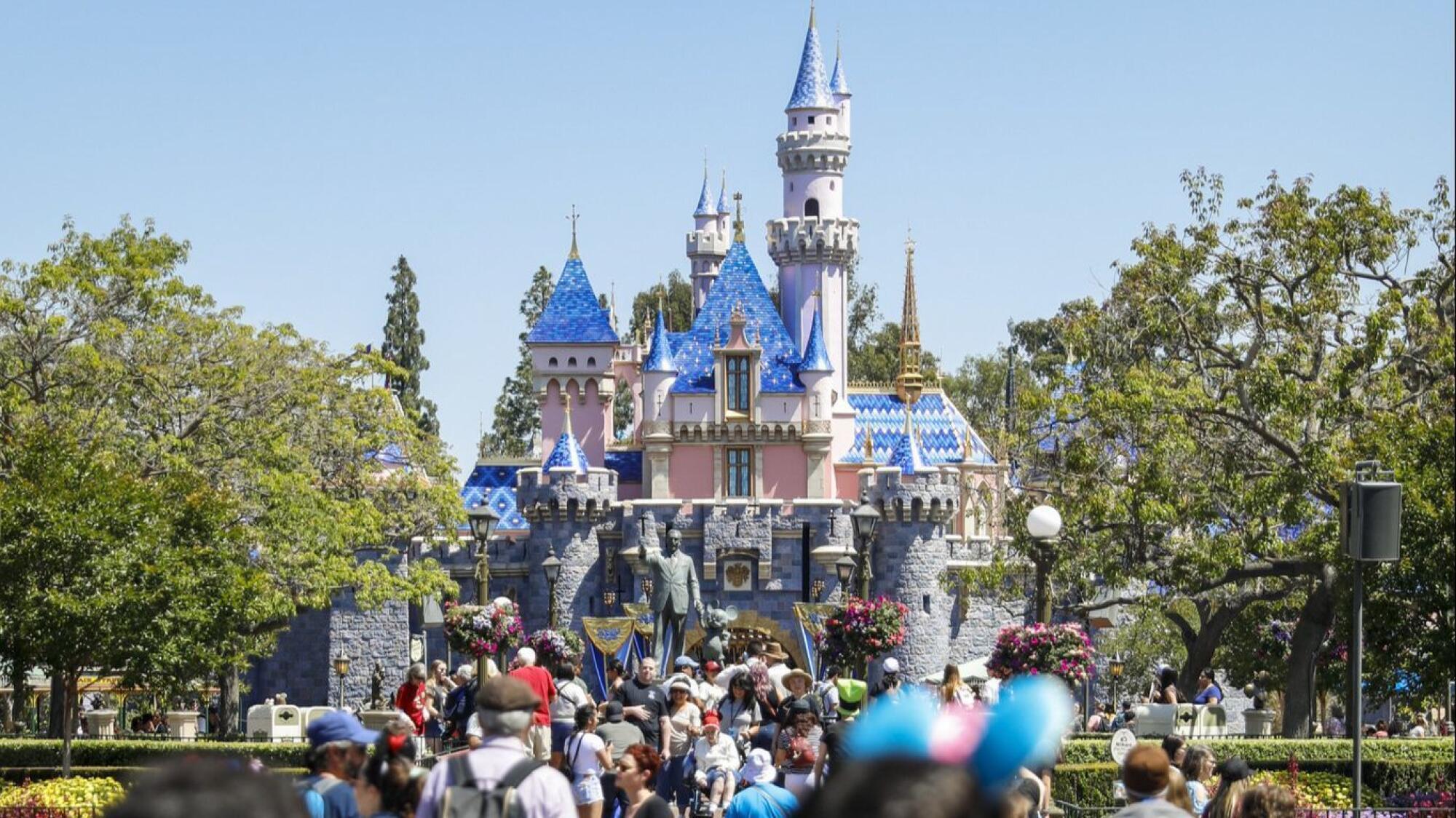
Opening a theme park — as Disney, Universal and others have done in Florida — in the midst of a surging pandemic feels more stubborn than magical, an unintended pledge of allegiance to bullheaded politicians.
At the start of Disneyland’s birthday week, California Gov. Gavin Newsom announced a retightening of statewide restrictions. The city of Los Angeles, just under 30 miles from Sleeping Beauty Castle, stated we are at “threat level orange” for COVID-19, a color-coded chart that pleads with residents to minimize contact with those we don’t live with and to avoid public, indoor spaces. On Monday, the L.A. Unified School District, despite federal pushes to open classrooms, stated schools would remain closed. Next door in Disneyland’s home, Orange County’s Board of Education recommended the exact opposite.
Such discrepancies not only fuel confusion but also represent a lack of a cohesive plan to tackle one of the greatest health, financial and personal crises of our lifetimes.
In Florida, which is reported to have more cases of COVID-19 than just about every country in the world, Walt Disney World and its four theme parks are currently welcoming guests, having opened about a month after its largest competitor, Universal Orlando, did the same. This despite the fact that essentially the rest of the world is currently off-limits to Americans — and vice versa — and Florida is now regularly described as the world’s COVID-19 hot spot.
What a small, contradictory, confused and messed-up world, after all.
The Happiest Place on Earth shut its gates Friday night due to the coronavirus crisis. A full non-weather-related closure of Disneyland has happened just three times in the park’s 65-year history. But this time is different.
For now, Disneyland isn’t reentering it. I worry that the park — a place described as a symbol of “reassurance” by one of its early architects — wouldn’t be able to provide the full emotional healing so many of us crave.
Since March 14, when Disneyland closed, I’ve been looking forward to the moment I could return. I shed a tear when I watched Shanghai Disneyland open its gates on a Sunday evening in May L.A. time — the time difference allowing it to become prime-time viewing in America. It was a sign of hope. I’ve rewatched the parts of the Disney+ series “The Imagineering Story” that detail the reopening of Tokyo Disneyland after that nation’s devastating 2011 earthquake, and how that event was a much-needed indication that the country was healing.
Yet I shed no tear this past week as I followed along with social media and news reports covering the reopening of Walt Disney World. While I’m happy to hear my friends tell me mask compliance is relatively high and the inevitable bottlenecks that will occur when crowds of any size gather are relatively rare and can mostly be avoided, there’s too much discomfort — or coronavirus — in the air.
Shanghai Disneyland opened among dwindling COVID-19 numbers, with new daily reported cases in the teens rather than the tens of thousands we’re experiencing in parts of America. There are, to be sure, numerous scenes from Walt Disney World that have made me smile, especially those that show some artistic creativity in this climate.

Socially distanced character meet-and-greets actually seem like a better solution than the standard photo-ops, as they encourage costumed cast to act. Winnie the Pooh frolicking in the Epcot grass attempting to catch butterflies is a better memory than standing in line for a non-socially distant hug. Likewise the random character processionals, which have replaced parades. While just before shutdown Disneyland launched a sassy, invigorating new parade that likely won’t return until there is a vaccine, these impromptu character moments introduce a greater sense of spontaneity and life to the theme park experience.
But Disney can do everything right — the welcome prevalence of social distancing markers and vinyl partitions in lines and on rides serve as reminders to keep our distance — and the message would still be less that the parks are safe and more that we, as a people, are not.
As we look longingly at other countries that have managed to temper the spread and are thus closing their borders to our infected bodies, the extensive measures taken in our theme parks may ease some minds, but it fails to obscure the reality: Our woefully inadequate safety nets are forcing workers to the front lines of a virus war zone to be accessories to someone else’s day out.
Worries of coronavirus and other issues matter little to enthusiastic visitors of reopened Shanghai Disneyland. But there are reminders of reality.
It’s no wonder that Disney’s media blitz this month rubbed so many the wrong way and became a thing of social media mockery. A commercial of face-masked staffers cleaning areas of the parks was remixed and redubbed with horror film soundtracks and ominous voice-overs. This couldn’t be what Disney marketers were hoping for.
In a time when we’re essentially encouraged to behave as if everyone around us has the coronavirus, I’m less concerned about Disney’s actions to protect me and am instead hyper-focused on others. Did that person quickly pull down their mask to talk? Did that person leave the bathroom without washing their hands?
Disney’s theme parks work because they present a narrative in a controlled environment. But in 2020 the lack of a unified approach to a raging COVID-19 all but guarantees no single human or company is in control of the story line. In an effort to avoid divisive commentary, we’re increasingly hearing that it’s a “personal choice” if someone wants to go to a restaurant or a theme park. Yet our emphasis on the individual over communal compassion is what got us here, and is in danger of making things worse as extended unemployment benefits start to disappear.
Since 1955 the Disney theme parks have done their best to reflect and distill American pop culture — the park, says its founder, is even dedicated to the “hard facts” that make up America — and that’s holding true now more than ever. An open Walt Disney World, the most recognizable and popular theme park in the world, is a reflection of our country’s stubborn desire to return to normalcy before managing a pandemic, complete with all the messy politics that entails.
“John Hench used to say that Disneyland was reassuring,” said the late, great, former Imagineering chief Marty Sklar of a longtime Imagineer who shaped Disney’s experiences. “You could speak to a stranger. You feel safe. You know you’re going to be respected. Everything is clean. It’s an example that you take back to your own community. ‘Why can’t it be like this? Why can’t we treat people like we get treated at the Disney parks? Why can’t our streets be as clean as it is at Disney?’
“It’s reassuring because you know things work.”
Today, on the contrary, the difference between the masks-required haven of a theme park and the anything-goes, ‘if you don’t like it, stay home’ attitude beyond the park gates is too stark for such a philosophy to hold true. Even the parks’ core mission — this is a place for families — is currently at odds with itself. Disney is a place for families, as long as no one in your family is older than 60, or immunocompromised, or regularly comes in contact with anyone who is over 60 or immunocompromised.
A cliché has emerged over the last few weeks. Most who have gone to Walt Disney World or Universal Orlando have reported they feel safer there than they do at their local grocery store. But aside from that being the basic requirement of a resort during any era — to feel safer than just about anywhere else — it also reveals some truly magical thinking: We’re becoming too comfortable with the idea that basic needs, such as buying produce, can put our life in danger.
Disney theme parks have always striven to show a more optimist, globalist future, be it the celebratory dolls of It’s a Small World, the crash-course in international travel that is Epcot’s World Showcase and even the recent uptick in multicultural events at Disney California Adventure. Fairy tales, of course, are pretty adept at metaphorically handling life lessons, but let us be careful to not throw up our hands and give into our president’s fantasy that the cure cannot be worse than the disease itself.
More to Read
The biggest entertainment stories
Get our big stories about Hollywood, film, television, music, arts, culture and more right in your inbox as soon as they publish.
You may occasionally receive promotional content from the Los Angeles Times.

